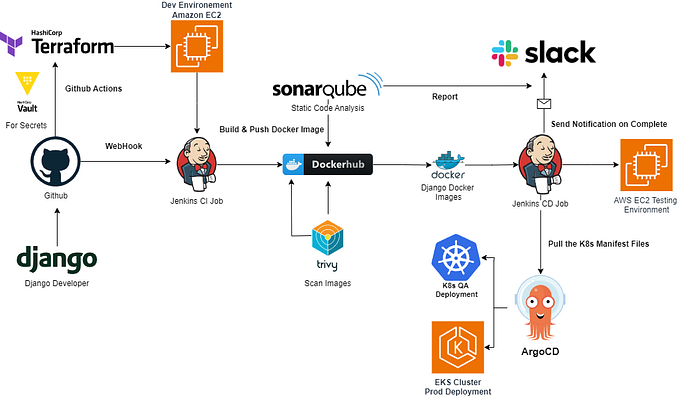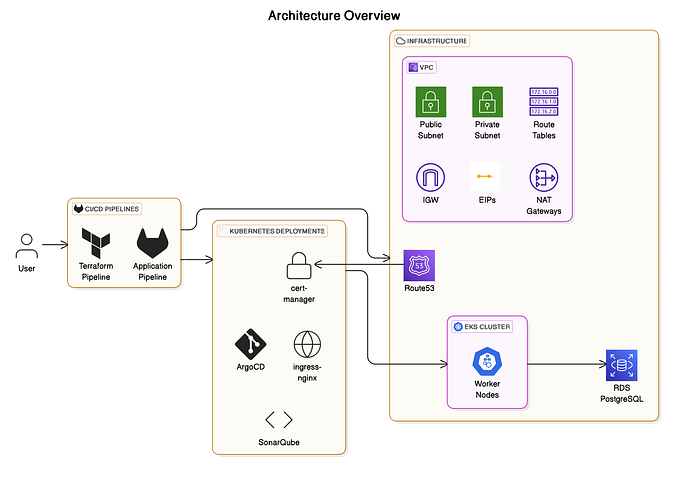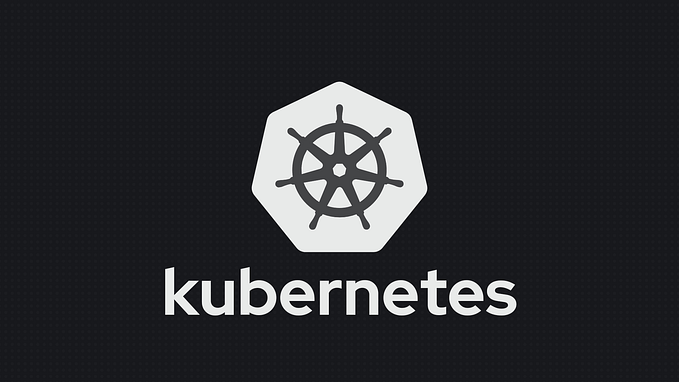Optimizing Kubernetes Application Delivery: Best Practices and Tools for CI/CD Pipelines

Introduction
Kubernetes is today’s leading container management platform, due to its comprehensive API and developer-friendly features. It allows users to create scalable and reliable applications that run on-premises systems and public clouds. To keep up with the automation level of Kubernetes, developing and deploying applications requires more autonomy. This is where continuous integration (CI) and continuous delivery (CD) come into play.
CI/CD Pipelines for Kubernetes
CI/CD tools work with a pipeline strategy and overtake the manual steps of getting the latest changes from the source code repository, compilation, testing, verification, and deployment to the cluster. With Kubernetes, you need to extend CI/CD pipelines with a container registry, configuration manager, Helm, and multiple cluster environments
Challenges of Kubernetes CI/CD Pipelines
The challenges of designing and using a CI/CD pipeline for Kubernetes can be summarised into the following three categories:
Microservices Architecture Complexity:
- Dependency Management: Microservices often have complex interdependencies, where changes in one service can impact others. The CI/CD pipeline needs to account for these dependencies and ensure that dependent services are updated or rebuilt in the correct order to avoid breaking the application. This can be especially challenging in environments with a large number of microservices.
- Deployment Coordination: Coordinating deployments across multiple microservices is crucial for maintaining system stability. The CI/CD pipeline needs to orchestrate deployments in a way that minimizes downtime and ensures that new versions of services are rolled out in a controlled and predictable manner. Strategies like blue/green deployments or canary deployments can be employed to mitigate risk during deployments.
- System-Wide Stability: With independent lifecycles and potentially frequent deployments, ensuring overall system stability becomes more complex in a microservices architecture. The CI/CD pipeline should incorporate mechanisms for monitoring system health and rollbacks in case of issues.
Kubernetes’ Dynamic Environment:
- Adaptability to Change: Kubernetes clusters are designed to be dynamic, with pods scaling up or down based on demand and deployments being updated frequently. The CI/CD pipeline needs to be adaptable to these changes and continue to function effectively even when the underlying infrastructure is in flux. This may involve using techniques like leveraging container image tags or versioning deployments to ensure the pipeline can track and deploy the desired versions of applications.
- Smooth State Transitions: The dynamic nature of Kubernetes requires the CI/CD pipeline to handle transitions between different states smoothly. For instance, the pipeline should account for rollbacks or rollouts being paused or interrupted due to unexpected events. Implementing mechanisms for handling retries and error handling can be crucial for ensuring pipeline resilience.
Tooling and Integration Challenges:
- Tool Selection and Integration Complexity: Kubernetes offers a vast ecosystem of tools for building, testing, and deploying containerized applications. Selecting the right tools for each stage of the CI/CD pipeline (e.g., building tools like Docker, container registries like Harbor, CI/CD platforms like Jenkins or ArgoCD) can be overwhelming due to the numerous options available. Furthermore, integrating these tools seamlessly and configuring them correctly to work together within the Kubernetes environment adds another layer of complexity to the CI/CD process.
- Matching Tool Capabilities to Project Needs: With a wide range of CI/CD tools available, choosing the ones that best suit the specific needs of a project can be difficult. Factors such as project size, team expertise, and desired features all play a role in selecting the appropriate tools. The CI/CD pipeline needs to be designed in a way that leverages the strengths of the chosen tools while minimising their limitations.
Best Practices for Kubernetes CI/CD Pipelines:
Architectural and Design Considerations:
- GitOps: Embrace GitOps principles by storing your Kubernetes manifests and configuration as code in a Git repository. This enables version control, change tracking, and easy rollbacks.
- Infrastructure as Code (IaC): Utilize tools like Terraform or Pulumi to manage your Kubernetes infrastructure as code. This ensures consistency, and reproducibility, and simplifies infrastructure management.
- Microservices-Friendly Approach: Design your CI/CD pipeline to handle microservices effectively. This involves managing inter-service dependencies, coordinating deployments, and ensuring overall system stability.
- Multi-Environment Pipelines: Create separate pipelines for different environments (e.g., development, staging, production) to ensure proper testing and gradual promotion of changes.
Implementation and Tooling:
- Container Image Best Practices: Build minimal, secure container images with clear versioning and tagging. Utilize image scanning tools to identify vulnerabilities.
- Helm Charts: Leverage Helm for packaging and managing Kubernetes applications. Helm charts provide a standardised way to define, install, and upgrade applications.
- CI/CD Platform: Choose a robust CI/CD platform (e.g., Jenkins, GitLab CI/CD, ArgoCD) that integrates well with Kubernetes and supports your workflow requirements.
- Observability: Implement comprehensive monitoring and logging to gain insights into your pipeline’s performance, identify bottlenecks, and troubleshoot issues.
Deployment Strategies:
- Blue/Green Deployments: Minimize downtime by running two identical environments (blue and green) and gradually shifting traffic from the old version to the new one.
- Canary Deployments: Gradually roll out new versions to a subset of users or pods, monitor their behaviour, and then proceed with a full rollout if everything looks good.
- Progressive Delivery: Combine various deployment strategies (e.g., canary, feature flags) to release new features in a controlled and incremental manner.
Security:
- Image Scanning: Regularly scan container images for vulnerabilities and outdated dependencies.
- Secrets Management: Store sensitive information (e.g., passwords, API keys) securely using tools like Kubernetes Secrets or external secret management solutions.
- Role-Based Access Control (RBAC): Define granular permissions to control access to Kubernetes resources and prevent unauthorized actions.
Testing and Quality Assurance:
- Continuous Testing: Integrate automated tests (unit, integration, end-to-end) into your pipeline to ensure code quality and catch issues early.
- Shift-Left Testing: Perform testing as early as possible in the development cycle to reduce the cost of fixing defects.
Additional Tips:
- Immutable Infrastructure: Treat your Kubernetes infrastructure as immutable. Instead of modifying existing resources, deploy new versions.
- Promote, Don’t Rebuild: If possible,promote container images between environments rather than rebuilding them to ensure consistency.
- Rollbacks: Implement a rollback mechanism to quickly revert to a previous working state in case of deployment failures.
Kubernetes CI/CD Tools
Jenkins X:
- Tailored for Kubernetes applications: Designed specifically for building and deploying applications on Kubernetes, Jenkins X offers a streamlined and opinionated approach to CI/CD. This can be beneficial for teams new to Kubernetes, as it removes some of the complexity of configuring a CI/CD pipeline from scratch. However, it’s important to be aware of this opinionated approach, as it may not be as flexible as other tools for more unique or complex workflows.
- Comprehensive CI/CD out of the box: Jenkins X provides a comprehensive set of CI/CD features built-in, including automated builds, testing, deployments, and rollbacks. This eliminates the need to cobble together integrations with multiple separate tools, simplifying the setup and maintenance of your CI/CD pipeline.
- Extensible with other tools and cloud providers: While Jenkins X offers a strong set of features out of the box, it can also be extended with other tools and cloud providers to meet your specific needs. This allows you to leverage your existing infrastructure and tools while still benefiting from the core functionalities of Jenkins X for your Kubernetes deployments.
- Relatively new and maturing: As a relatively new offering compared to some other CI/CD tools, Jenkins X is still under development and may not be as feature-rich or stable as some more established options. It’s important to consider this when making your decision, especially for production-critical deployments.
Argo CD:
- Declarative continuous delivery for Kubernetes: Argo CD takes a declarative approach to continuous delivery specifically designed for Kubernetes environments. This means that your application configurations are stored as code in Git repositories, allowing for version control, easy rollbacks, and collaboration among developers and operations teams.
- GitOps implementation: Argo CD adheres to the GitOps pattern, which promotes treating your Git repository as the source of truth for your infrastructure and application configurations. This approach simplifies management and ensures that the Kubernetes cluster state is always in sync with your desired state as defined in Git.
- Direct Kubernetes cluster installation: Unlike some CI/CD tools that run externally, Argo CD is installed directly into your Kubernetes cluster. This provides tight integration with the Kubernetes environment and simplifies communication between Argo CD and your cluster resources.
- Active community and high adoption: Backed by a thriving community and boasting a high adoption rate, Argo CD benefits from ongoing development, a wealth of resources, and a strong support ecosystem. This can be a major advantage when choosing a CI/CD tool, as it ensures you’ll have access to help and troubleshooting assistance when needed.
- Ideal for GitOps teams: If your team has already adopted or is interested in implementing a GitOps approach to managing infrastructure and applications, Argo CD is an excellent choice. Its close integration with Git and adherence to GitOps principles make it a natural fit for teams working in this way.
Spinnaker:
- Multi-cloud CD tool from Netflix: Developed by Netflix and released as open-source, Spinnaker is a mature and feature-rich CD tool specifically designed to manage the infrastructure and deployment lifecycle of complex applications. It supports deployments across multiple cloud environments, including Kubernetes and Cloud Foundry, providing a unified workflow for managing deployments regardless of the underlying infrastructure.
- Focus on complex deployments: Spinnaker excels at handling complex deployments, offering features like advanced routing, canary analysis, and rollback strategies. This makes it a valuable tool for large organizations with intricate deployments and the need for granular control over the delivery process.
- Sophistication for larger organizations: While Spinnaker is a powerful CI/CD tool, it can also be complex to set up and manage. This complexity may be overkill for smaller teams or those with simpler deployment requirements. Spinnaker is best suited for larger organizations with the resources and expertise to manage its intricacies effectively.
Conclusion
Despite the significant risk reduction that best practices and tools bring to Kubernetes lifecycle management, unexpected challenges may still surface. It’s crucial to stay flexible and ready to address issues as they emerge, even with the most meticulously designed processes at your disposal. Here are some extra strategies to strengthen your resilience against potential complications:
- Adopt thorough monitoring: Keep a constant watch on the Kubernetes clusters and applications for performance indicators, resource usage, and error logs. This proactive approach will give early alerts of potential issues, enabling them to intervene before they develop into severe failures.
- Set up well-defined rollback procedures: Establish a clear and thoroughly tested rollback plan to return to a prior functional state in the event of deployment failures. This strategy will reduce downtime and lessen the impact of issues on your applications.
- Conduct regular incident response drills: Make it a habit to carry out incident response exercises to ensure the team is equipped to efficiently troubleshoot and rectify issues that may crop up in the Kubernetes environment. This practice will help to reduce downtime and expedite recovery actions.




![Key Observability Trends for 2024 [AI and Opentelemetry(Otel)]](https://miro.medium.com/v2/resize:fit:679/1*Ywks1br3kTY8nC_IM3nB1A.png)





